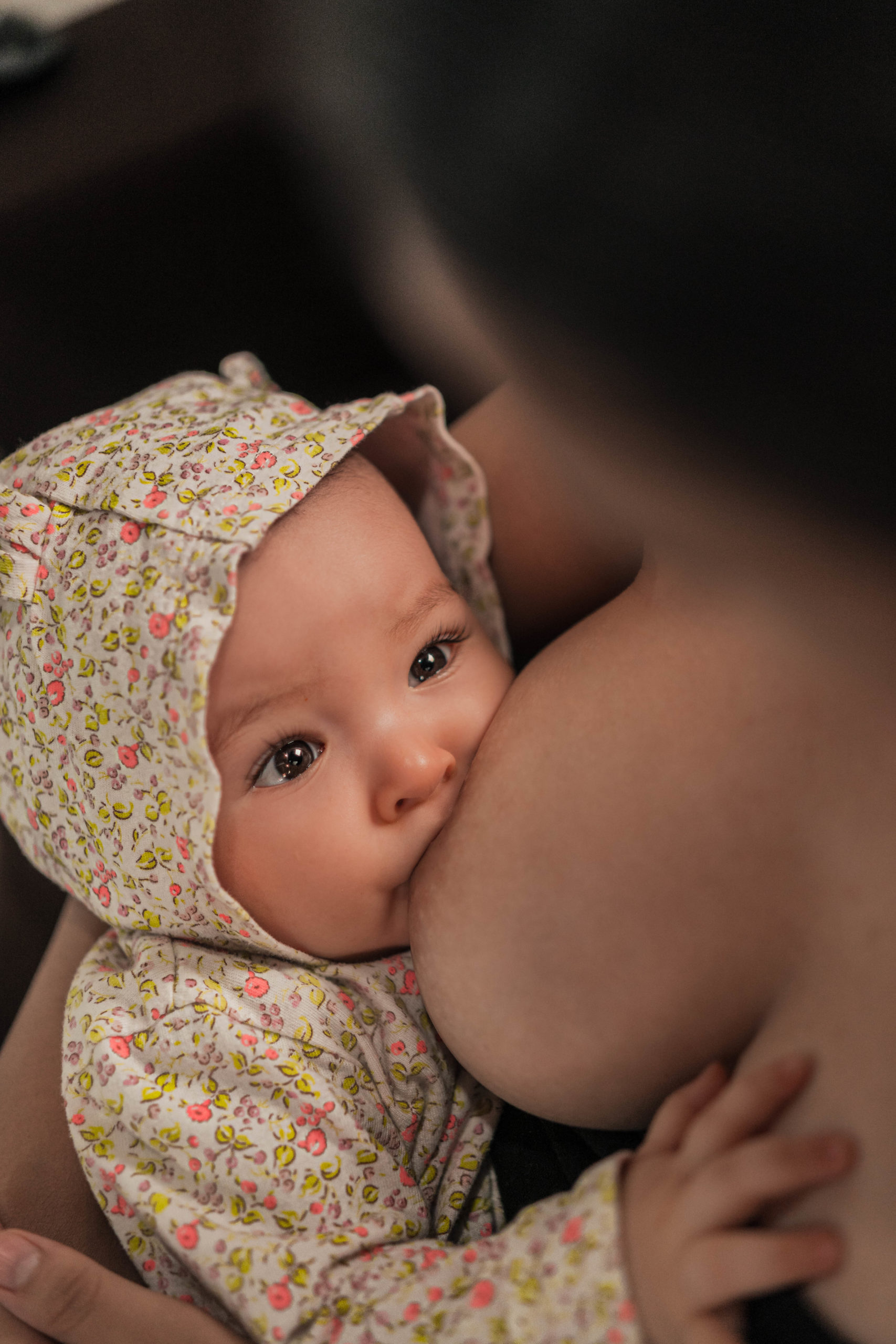Myths About Breastfeeding Part 2
 The first part of Breastfeeding Myths focused more on mothers and their bodies. This second section looks at myths of breastfeeding related to the needs of a baby.
The first part of Breastfeeding Myths focused more on mothers and their bodies. This second section looks at myths of breastfeeding related to the needs of a baby.
Newborns need to be on a feeding schedule
Newborns tend to eat every 2-3 hours, but that can vary depending on how they feel, comfort, growth spurts, etc. Sometimes your little one may cluster feed – wanting to be at the breast frequently during the day. Reading a baby’s feeding cues is important, such as getting restless, turning head side to side, smacking and licking lips, or moving hands to mouth.
Babies only need to breastfeed off of one side
In most breastfeeding relationships, babies will nurse from both sides. Babies may take similar amounts of milk from both sides or take less from the second one. Initially, try to give your baby the opportunity to take both breasts during a feeding. As your milk adjusts and baby continues to grow, watch for signs baby is not interested or seems satisfied after eating on only one side.
Babies won’t breastfeed if they have had a bottle
A lot of babies are successful switching between breast and bottle. Even giving one bottle per day helps babies adjust to going between both. This can be especially important if a mother is going back to work.
Babies won’t breastfeed if they use a pacifier
Babies use sucking to help soothe themselves for the first 7-9 months of life. Some women allow babies to be at the breast to soothe and others prefer to use a pacifier. Just because a baby is allowed a pacifier does not mean they will not breast feed. If choosing a pacifier, educate yourself on the types and shapes appropriate for good oral development.
Do not use formula if you want to breastfeed
A lot of mothers use a combination of breastmilk and formula to feed their babies for a variety of reasons. When picking a formula, it is important to educate yourself on the types and preparation of formula to choose the best one for your baby. If you choose to use formula and still want to breastfeed, continue offering the breast to your baby as often as possible. Do not go longer than 3 hours during the day either offering the breast or pumping, as going longer can start to reduce milk supply.
It can be difficult to wean a baby if they breastfeed for longer than a year
There is not solid evidence to support that it is more difficult to wean a baby after a year. There is a lot of evidence to show that breastfeeding babies longer than a year, and even two years, is beneficial. This definitely does not mean that you have to or even want to. All babies and mothers are different, and you have to do what you feel is right for your feeding relationship with your child.
Breastfed babies tend to be more clingy than non breastfed babies
Each baby has a different personality. Some babies may appear clingy and others not, though this does not necessarily depend on being breastfed. Every baby is different no matter whether they are fed via breast, bottle, or a combination. The important thing is to hold, nurture, and love your child so that they feel safe and secure as they grow.
Babies can also experience difficulties with their latch when feeding at the breast or bottle, contributing to feeding problems. If you feel your baby is having difficulties, contact a professional such as Alyssa Lundquist, a speech-language pathologist AND certified lactation counselor. Or if you are wondering about more myths related to breastfeeding, click here.
